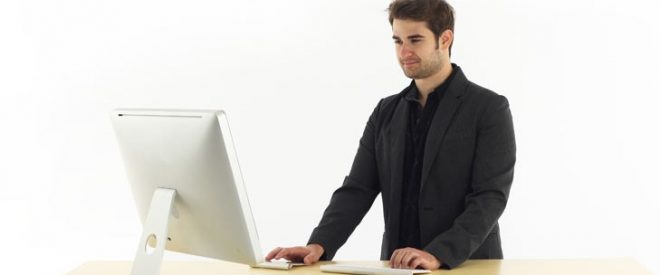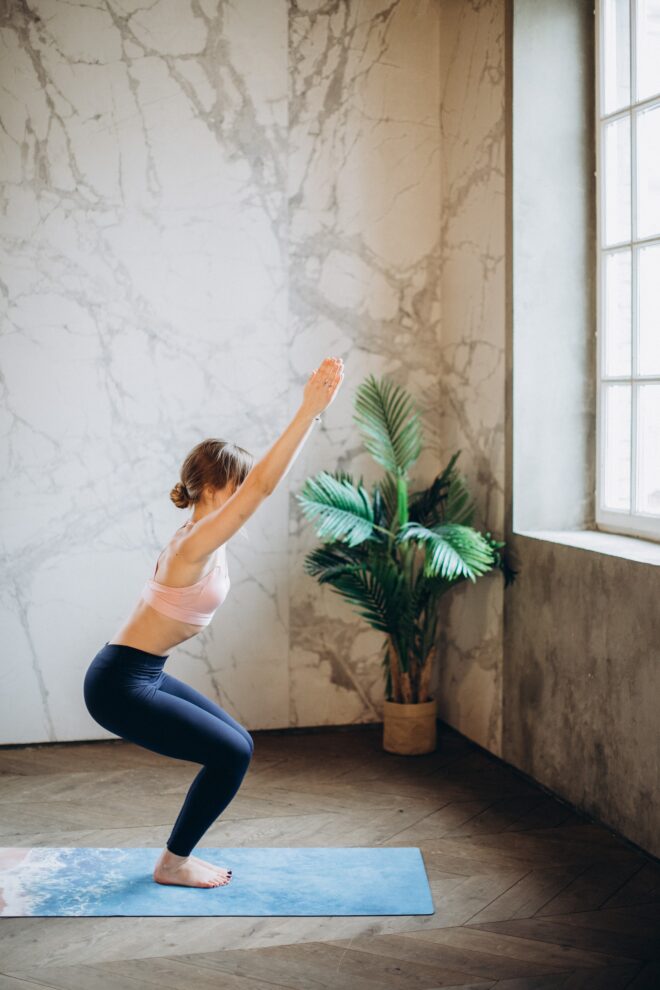
Clinic news
Clinic News
Shortlisted for The British Chiropractic Association Excellence Awards 2023 'Clinic of the Year' - we are in the top three. Alex and the team will be attending the BCA conference on 18th November and have been invited to the gala dinner where the award winners including those for Chiropractor's Chiropractor and New Chiropractor of the Year will be announced. Our thanks go out to you our patients and the supporting companies who made it possible for us to achieve over £4500 for our 30 Tress for 30 Years fundraiser. Don't forget Saturday 4th November is our date for tree planting - please come and join us - more details to follow.
We need your help please: to complete our Royal College of Chiropractors Patient Participation Quality Mark (PPQM) for 2024-2026 - We need to know what you think about us and how we are doing. Please look out for the questionnaire sent to you by email before your next appointment in September. There will be some paper copies at reception if you'd rather participate the traditional way - Every completed survey will be entered into a prize draw for a goody bundle of a pillow/ office cushion, ice pack and some KTape - get your completed forms in now- be in it to win it.
Most of the team have had a chance to have a break this month and we thank everyone for being so understanding in being happy to see another team member when necessary. We are looking to 'Buddy' everyone up with a second chiropractor so that if your designated chiropractor is away or entirely booked, you can confidently book with someone else knowing that they understand your case and have had the opportunity to discuss your care.
Alex jets off to Barcelona next week to attend an international conference The Kids Summit, where renowned speakers will be presenting the latest chiropractic research and techniques in support of the young child.
Our clinic has successfully submitted eight completed surveys for the International Adolescent Research Project - While much is known about neck and back pain in adults, little is known about neck and back pain in this age group (12- 17-year-olds). The study aims to see how neck and back pain changes with chiropractic care. The findings of this study will help us understand neck and back pain in young people so that better care can be developed. If you have a youngster that might want to participate talk to reception about the T's &C's.
As a new school year is only days away and for many a return to work from a well-earned holiday, be kind to your spine - check out some top tips this month so you can start your year in good spinal shape.

Take a Stand on Back Pain
Could standing work desks be the answer to unwanted back pain?
Recent workplace trends show that many employers are now opting for standing work areas, rather than the more conventional seated desks, in a bid to prevent their workers suffering from back pain and to help increase their productivity in the office.
But are these innovative standing workspaces really the way forward to a healthy back, free from pain and discomfort? Here are three things to bear in mind if your work place decides that standing, rather than sitting, is best way forward:
- Standing tall
Sitting and bending forward (as you tend to do in an office seat) can put twice as much load on your spine as standing does so standing desks could well be a better option for the office.
- Take a break
While standing, however, it is important to remember that you should still take regular breaks as you would when sitting at a desk. Being stuck in one position, even if it is in a ‘good posture’, is not advisable.
- The best of both
A desk set up that allows you to stand as well as sit is the most ideal situation, as this gives you the option to change position regularly. The more adjustable your desk set-up is, the more likely you are to find a position that suits you.

Posture Tips to Straighten Your Back Naturally
Correcting poor posture habits is essential to spine health. To avoid long-term health issues, it is best to start to develop good habits.
Your sleeping posture is more important than you may think. If you sleep on your side, place a flat pillow between your legs and knees to help keep your spine straight and aligned.
Always use a supportive pillow under your head to properly align and support your shoulders and skull. Sleeping on your side or back is almost always better than sleeping on your stomach.
Driving posture is also very important. Move your seat up so that you can depress both foot pedals all the way to the ground with your knees remaining bent. Your back should remain against the seat. Recline the back of the seat very little, by only about 5 degrees.
If there is a height adjustment, raise the seat so that your hips align with your knees. If an adjustment isn’t available, consider buying a cushion. Your head should never reach the ceiling and cause you to slouch. The top of your headrest should match the top of your skull. If possible, tilt the headrest forward so that it’s no more than 4 inches from your head.
When it comes to standing posture, stand with your heels, hips, and shoulders aligned. Do not shrug your shoulders forward, roll them back slightly and allow your arms to naturally hang at your sides. Make sure you keep your feet shoulder-width apart.
These are all ways you can straighten your back naturally. Give them a try and see if you notice a difference.
Visit the your local chiropractor to learn some more about posture tips.

Dangers of Back Pain at School
Children are back in the classrooms, running around playgrounds and playing sports. However, children, like adults, can be prone to back pain, and there can be several causes.
The most common causes of joint and back pain in school children are:
- Lack of exercise or excessive exercise
- Weight of school bags
- Bad posture
- Poorly set up desks
- Use of a computer or computer games
- Sports injuries
- Ill-fitting shoes/improper shoes
Lack of exercise and excessive exercise
The general finding from various studies is that children involved in competitive sports and those who are sedentary are more prone to getting low back pain while those that participated in moderate activity were protected. The children involved in competitive sports run the risk of getting repetitive strain injuries. Those children who are sedentary are often those who sit and watch a lot of television or play on a computer. The implication of this will be discussed below.
Weight of school bags
School bags are exceptionally heavy for those attending secondary school due to the number of different subjects covered and therefore the number of textbooks required and the fact the children often have to move between classes. Not all children have access to lockers, which mean that books have to carried with them. Bags carried on one shoulder causes an asymmetry of the body and therefore certain muscles will have to tighten and others lengthen in order to carry the bag. These kind of imbalances can cause long-term problems.
Bad posture
All aspects of life can induce bad posture; lack of exercise, weight of school bags, spending too much time playing computer games or on the computer, incorrect shoes, and growth. Those children who grow faster and become taller than their peers may slouch in order to not tower above their friends and this can ultimately lead to bad posture.
Poorly set up desks
Whether at school or home, ill fitting desks can lead to bad posture. School desks and chairs cannot cater for individual heights of children and, as mentioned earlier, the children often have to move between classes. The desks and chairs are uniform and unable to be altered to the child’s individual needs. Guidance on correct desk set up should be implemented at home; not just for the kids but also for everyone in the family who uses the desk. At school this can’t be done, but by advising the child to sit upright and not to slouch and not to cross the legs will help.
Use of a computer or computer games
Any body position requires certain muscles to shorten and others to lengthen. This occurs every time we move. If we were to stay in one position for too long those muscles will eventually stay that particular length. When children play on computer games it quite often requires time. This leads to the above situation with muscles. Children should be encouraged to not spend longer than 30-40 minutes at any one time playing games, using a computer, or even doing homework before having a break. The child should spend a few minutes walking around and then returning to the game/homework by reviewing their posture and sitting correctly.
Sports injuries
Those children who play a lot of sport and those who play contact sports such as rugby may be injured either by direct contact or by overuse of certain muscles. If a child is injured it is advisable that they are seen by a chiropractor as problems unresolved can lead to compensations, ie walking differently due to sprained ankle leading to low back pain, a rugby tackle causing neck pain and headaches.
Ill-fitting shoes/improper shoes
Children are conscious of fashion, which can affect their shoe wear. Girls particularly may wear shoes with a high heel. This causes the calf muscles to shorten and pushes the body forward. To prevent falling over the girl would have to lean back and causing an increase in the low back curvature which can not only cause low back pain but also pain between the shoulder blades.
Wearing improperly fitting shoes can cause many problems from blisters, pressure sores and ingrowing toenails in the short-term, to feet deformities like hammer toe, and knee and posture problems in the long-term. It can take up to 18 years for feet to fully develop, so teenagers feet need to be looked after just as much as younger children’s.
Shoes should be the correct size and offer the right amount of support. When purchasing new shoes, get the child’s feet correctly sized by the shop assistant and ensure that the shoes are the correct length as well as width.
Here’s some advice to help your child:
- Rucksacks should be worn across both shoulders and the straps adjusted so the bag is held close to the body.
- If a locker is available, encourage your child to use it and ensure they only take the books and equipment needed for that day.
- Check their shoes are correctly fitted, supported, relatively flat, and are not too worn.
- Encourage your child to enjoy regular exercise, such as swimming and cycling.
- Use of the computer, playing computer games and homework should be in blocks of no more than 30-40 minutes. Advise them to have a little walk before returning and again that they sit with their shoulders down and back (not slumped) and their legs are uncrossed.
- See a chiropractor if your child is experiencing pain or discomfort, or even just to get a check up.

Enhancing Gut Health with Diet and Lifestyle Changes
The gut, often referred to as our “second brain,” plays a vital role in our overall health, from digestion to immune function and even mental well-being. Let’s unpack how you can nurture your inner ecosystem for optimal gut health.
Understanding the Gut-Health Connection
The intricate ecosystem within our digestive system, comprising of trillions of microbes, influences our health in numerous ways. Poor gut health has been linked to digestive disorders, inflammation, weakened immunity, and even mental health issues. Fortunately, with a few dietary and lifestyle tweaks, you can cultivate a thriving gut environment and enjoy the benefits of a healthier, happier you.
Embrace a Plant-Centric Diet
Plant-based foods are the heroes of gut health. Fill your plate with a rainbow of fruits, vegetables, whole grains, legumes and nuts. These fibre-rich foods nourish beneficial gut bacteria, promote regular bowel movements and provide essential vitamins and minerals for optimal digestive function.
Include Fermented Foods
Fermented foods are gut health superstars. It is well worth Incorporating foods like yogurt, kefir, sauerkraut, kimchi, and kombucha into your diet. These probiotic-rich delicacies introduce beneficial bacteria to your gut, fostering a diverse microbiome and enhancing digestion and nutrient absorption.
Reduce Processed Foods and Added Sugars
Bid farewell to heavily processed foods and excessive added sugars. These culprits can disrupt the balance of gut bacteria, contribute to inflammation, and compromise digestive health. Opt for whole, unprocessed foods and natural sweeteners like honey or maple syrup in moderation.
Stay Hydrated
Proper hydration is key to a healthy gut. Water aids digestion, promotes regular bowel movements, and helps maintain the optimal balance of digestive juices. Aim to drink at least 8 glasses of water a day, and consider herbal teas or infused water for added flavor and benefits.
Manage Stress
Believe it or not, stress can wreak havoc on your gut health. Chronic stress disrupts the delicate balance of gut bacteria and impairs digestive function. Incorporate stress management techniques such as meditation, deep breathing exercises, regular exercise, or engaging in hobbies that bring you joy.
Prioritise Sleep
Quality sleep is a vital component of gut health. Aim for 7-8 hours of uninterrupted sleep each night. Poor sleep has been linked to imbalances in gut bacteria and increased susceptibility to digestive issues. Create a relaxing bedtime routine and optimise your sleep environment for a restful night’s sleep.
Move Your Body
Regular physical activity is not only beneficial for your overall health but also supports gut health. Exercise helps stimulate digestion, improve bowel regularity and reduce inflammation. Find activities you enjoy, such as walking, yoga, dancing, or cycling, and aim for at least 30 minutes of moderate exercise most days of the week.
Mindful Eating
Slow down and savour your meals. Engage your senses, chew your food thoroughly, and be mindful of your hunger and fullness cues. Mindful eating promotes better digestion, aids nutrient absorption, and allows you to fully enjoy and appreciate your food.
Experiment with Gut-Friendly Foods
Certain foods can be particularly beneficial for gut health. Consider incorporating ingredients like ginger, turmeric, garlic, onions and olive oil into your meals. These ingredients possess anti-inflammatory and antimicrobial properties that support a healthy gut ecosystem.
Seek Professional Guidance
If you’re experiencing persistent gut health issues, please seek a healthcare professional for how to move forward.
We treat all conditions that affect any muscle or joint in your body, from your head to your little toe! One of the most common complaints that we treat is back pain and Chiropractic is recommended by the government authority, the National Institute for Clinical Excellence (NICE) for acute and chronic back pain. Some of the other conditions that we treat are neck and headache, shoulder pain, leg and hip pain, knee and foot pain, sciatica and arthritis. Our registered Chiropractors all have at least five years of training. Treatment costs can be covered through most health insurers. If you are in any doubt, we are always very happy to talk with you on the phone to see if your condition will respond well to Chiropractic treatment. Call the clinic now to arrange an appointment time that works for you. 0115 9225085 If you would like to opt-out of receiving these newsletters please follow the unsubscribe link below, email alex@beestonchiropractic.co.uk or let us know at your next appointment.





